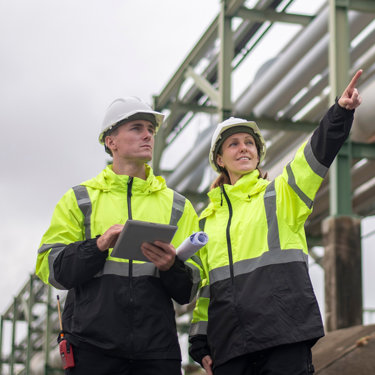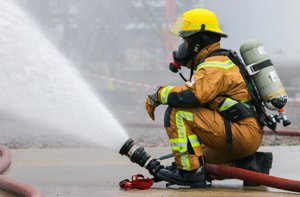
Firewater containment planning
Ready to discuss your project?
Please leave your details and a member of our team will reach out to discuss your requirements in more detail and arrange next steps.
We help organisations remain compliant with CIRIA C736 Containment systems for the prevention of pollution, in the event of a fire by developing a bespoke site firewater containment plan.
A firewater containment plan is a document outlining a series of measures to limit the damage caused during a fire. Firewater is the water used to extinguish a fire (non-routine) that may run off site and cause damage to the surrounding environment.
If firewater gets into surface drains it can have a devastating effect on aquatic life. The fire service carry environmental containment equipment including drain covers to stop firewater getting into drains. But if an adequate containment area has not been designated for firewater, it must go somewhere. This will be the lowest part of your site.
Once the fire has been extinguished the fire service is not responsible for removing the firewater, you the business owner are. And you can’t just let it go down the nearest surface drain as you could end up polluting a local waterway and be slapped with a huge fine.
Legislation
GPP3 18 - Managing Firewater and Major Spillages
This guidance document gives examples of good practice for the protection of the environment in the management of run-off generated in the event of fire (or fire water) and major spillages. It aims to help site operators consider what is appropriate for a specific site, taking into account the risks and site layout.
Containment Systems for the Prevention of Pollution (C736)
This guidance has been developed to assist owners and operators of industrial and commercial facilities storing substances (inventories) that may be hazardous to the environment. It provides guidance on identifying the hazards, assessing the risks and mitigating the potential consequences of a failure of the primary storage facility and/or the combustion of its contents. A three-tier risk assessment methodology is introduced with recommendations for different ‘classes’ of construction for each.
Features and outputs
- Ensure compliance with GPP3 18 Managing Firewater and Major Spillages and CIRIA C736.
- Calculate sources and release volumes as worst case.
- Develop firewater or tertiary containment plan.
According to GPP3 18 pollutants may escape from the site into the water environment by a number of pathways including:
- the site’s surface water drainage system, either directly or via off-site surface water sewers.
- direct run-off into nearby watercourses or onto ground, with potential risk to groundwaters.
- via the foul drainage system, with pollutants either passing unaltered through a sewage treatment works or affecting the performance of the works, resulting in further environmental damage.
- through atmospheric deposition, such as vapour plumes.
Our experts use the Source-Pathway-Receptor model to calculate sources and release volumes as worst case and will help you to build a firewater containment plan considering the below:
- Containment systems including primary and secondary containment
- Remote containment systems if primary and secondary containment are inadequate. These include containment lagoons, purpose-build tanks, shut-off valves and penstocks and oil separators.
- Temporary emergency containment systems including sacrificial areas, bunding of vehicle parking and other hard standings, pits and trenches, and portable tanks, overdrums and tankers.
- Emergency materials and equipment including sand and earth, proprietary absorbents, sealing devices and substances for damaged containers, drain seals, booms.
- Waste management. Measures should be in place to dispose of, as soon as possible, any spillage, contaminated material or firefighting water.
- Firefighting strategies and run-off management. The Plan may consider firefighting strategies and possible methods of reducing the amount of firewater run-off generated.

You might also be interested in...
Environmental compliance today, creating a sustainable tomorrow
Helping you reduce risk to the environment and your operation by managing assets compliantly while achieving commercial, ESG, and net-zero goals.
Contact our experts

